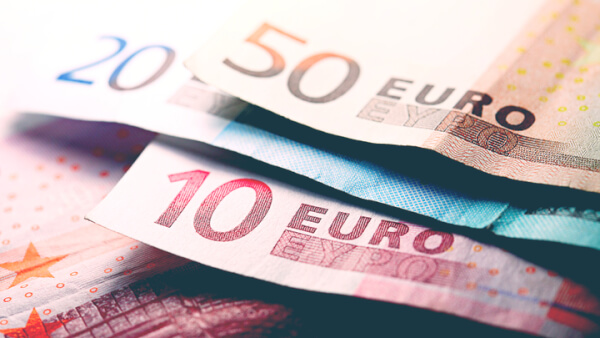Money in Lithuania: Banks, ATMs, cards & currency exchange
If you’re looking for a combination of old world charm and natural beauty, Lithuania is definitely worth a visit. From the enchanting cobbled streets and...

Lithuania is the largest of the Baltic states. It’s perfect for a mini-break to take in the vibrant capital of Vilnius, with its soaring spires and medieval old-town. Or maybe you’ve fallen in love with the long sandy beaches, majestic castles and unspoiled nature, and intend to explore a bit further off the beaten track. Either way, you’re going to need some cash to make the most of your visit.
Using ATMs to withdraw local currency is a convenient choice for many travellers and expats. Here’s all you need to know about using ATMs in Lithuania.
Lithuania has a well-developed banking network. Finding an ATM - also labelled as Bankomatas in Lithuanian- will be no problem** in towns and cities in Lithuania. It’s worth keeping some cash handy if you’re heading further afield, though, as rural areas won’t be so well-covered.
ATMs can be found in bank branches, in shopping centres and near supermarkets. Find the most convenient location for you, using one of the following ATM locators from large national and regional banks:
Most major credit and debit cards will be accepted in towns and cities in Lithuania. It’s important to note, though, that Discover card isn’t accepted in either merchants or ATMs in Lithuania. American Express is also less popular than Visa and Mastercard, so if you’re reliant on your Amex, you might need to check your card will be accepted before you buy anything.
Not all bank cards can be used in all ATMs, but it’s easy enough to find one on the right network using one of the following locators:
Bank cards in Lithuania usually have chip and pin technology, and use a 4 digit PIN code.
If you have a magnetic stripe card, often issued in the USA, and want to use it in ATMs in Lithuania, you’ll need to get the card’s PIN from your bank before you travel. Cards from elsewhere in Europe, the UK and Australia, which usually have chip and pin technology should be accepted with no problem.
If you have a maximum daily cash withdrawal limit set at home, it’ll apply in Lithuania, too. If you’re visiting and don’t have an upper limit set on your account, you’ll likely find that ATM providers will limit you to a withdrawal of about €250 per transaction.
Bank fraud departments track transactions and can limit or block your card if they spot unusual activity. That means that if they don’t know you’re planning on being abroad, you might find that they put a stop on your card for safety until they can confirm it’s you using it. Let them know your plans in advance, and you should be able to use your card as normal during your trip.
Using an ATM to get the euros you need to pay for your trip is a convenient option. However, using ATMs abroad usually isn’t free. There are a few fees - and potential ripoffs - you need to know about before you use your card in an ATM in Lithuania.
Dynamic currency conversion (DCC) is one of the most common ways travellers get ripped off using an ATM. DCC is where you’re asked if you want to pay in your home currency when you’re buying something, or using an ATM abroad.
It might sound helpful, but DCC transactions leave you exposed to hidden fees because the exchange rate used under DCC is often not the real, mid-market rate - the one you’d find on google. Instead, the bank or ATM provider is able to mark up the exchange rate and keep the difference as their profit. All you see is the amount expressed in your home currency so the true exchange rate isn’t easy to work out. You’ll get a better deal if you always choose to pay in the local currency instead.
Before you travel, check out the fees levied by your own bank, on international cash withdrawals. These will be covered in your terms and conditions, which you can often find on the back of a bank statement, or by logging into your account online.
You might also find an extra fee added by the Lithuanian bank or ATM provider if you use your foreign bank card to withdraw cash. However, most bank-run ATMs don’t charge, and they’ll usually have an English option, so any extra costs will be flagged up before you complete the transaction.
If you’re withdrawing cash from a euro bank account, you might be able to get free withdrawals if your bank works in partnership with one of the regional brands operating in Lithuania. However, if there’s a currency conversion involved, the chances are that you’ll face fees at some point in your transaction - either from your own bank or the ATM provider.
You can reduce ATM fees in Lithuania with a few simple tricks. However, without a local bank account, you might not be able to avoid the costs entirely.
Check before you travel, if your bank has any local partner in Lithuania, which could allow you to get free or reduced-fee ATM use while you’re abroad.
Different banks have different charges and fees for currency withdrawal overseas. If you have several accounts to choose from, it’s well worth checking the small print and choosing the one which offers the best deal. Foreign currency cash withdrawals using a credit card are usually an expensive choice, so if you’re considering covering your holiday with your credit card, make sure you know what fees you’ll pay for the privilege.
Not all ATMs offer the same deal, and some in the more obvious tourist locations might not offer a great value. Stick to ATMs attached to banks, in supermarkets or shopping centres if you can, as the exchange rates there are often much more favourable.
Whatever else you do - steer clear of DCC. Pay in local currency or you could be hit with high fees and poor exchange rates.
If you’re looking for a simple way to get access to your money abroad, Wise might be the answer. You get the real, mid-market exchange rate on every transfer, and the fees are laid out up front so you know you’re getting a fair deal.
If you or someone you know has a local Lithuanian bank account, you can transfer money between accounts before you travel, using the best exchange rate available. It's quick and convenient, and you don’t need to worry about nasty hidden charges. Frequent travellers could benefit even more with a borderless multi-currency account from Wise. You can hold your money in any one of dozens of different currencies, including euros, and there are no monthly account fees. Just activate your debit card for the account, and pay with your euro balance in shops and restaurants. No more ATM fees, or dodgy exchange rates to worry about.
Travelling is seldom cheap, so cutting out unnecessary costs is essential. Using ATMs can be a smart way to limit the fees you have to pay as long as you avoid the more common scams and ripoffs. Alternatively, use Wise, to send money to a local account, and withdraw cash from ATMs as you need it, or spend using your borderless multi-currency account card, and avoid ATMs altogether.
*Please see terms of use and product availability for your region or visit Wise fees and pricing for the most up to date pricing and fee information.
This publication is provided for general information purposes and does not constitute legal, tax or other professional advice from Wise Payments Limited or its subsidiaries and its affiliates, and it is not intended as a substitute for obtaining advice from a financial advisor or any other professional.
We make no representations, warranties or guarantees, whether expressed or implied, that the content in the publication is accurate, complete or up to date.

If you’re looking for a combination of old world charm and natural beauty, Lithuania is definitely worth a visit. From the enchanting cobbled streets and...